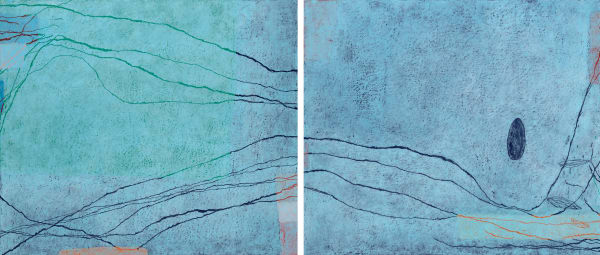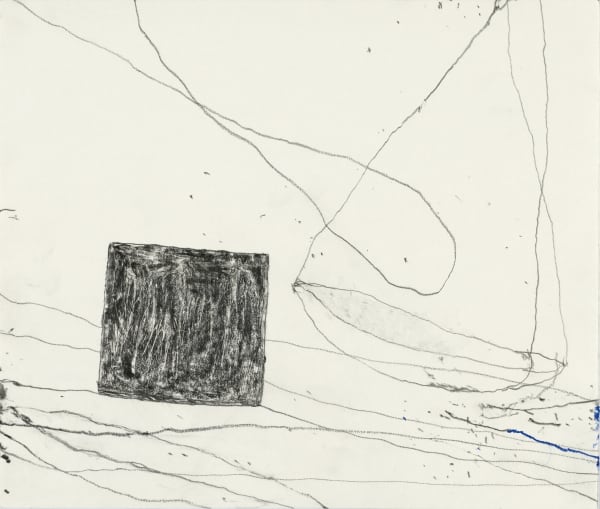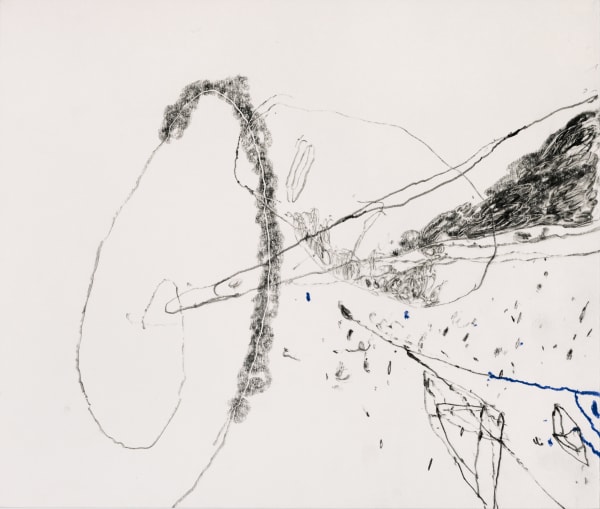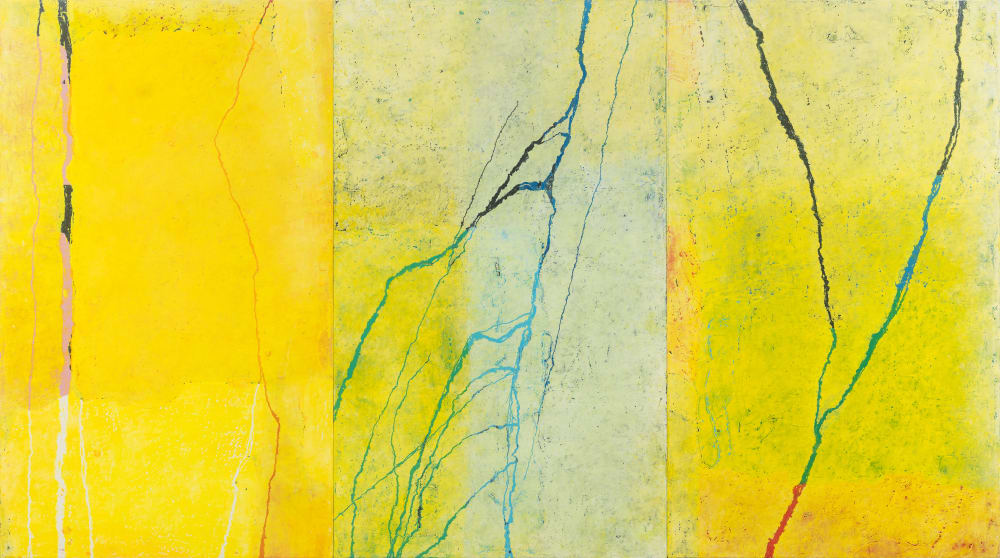The air that we breath, the appearance of emptiness, […] the space we cross is nothing but this earthly blue, invisible from being so close to us, so integral to our body. (Jean-Michel Maulpoix)
The sky, the sea, a lake. Blue is the color that withdraws, that surrounds us but is intangible, like the air and the water we need to live. Paco Knöller dedicates his exhibition Atemblau to the color blue. From March 17 until April 21 at Galerie Thomas Schulte the artist presents new large-format works in oil crayon on wood as well as new drawings from his cycle “Aufwachraum”, which the artist began in 2015.
In a corner of his airy and bright studio in Berlin-Kreuzberg Paco Knöller has created an archive: On top of a large worktable lies an arsenal of hundreds of oil crayons, which the artist has collected over the years while travelling to different countries. Knöller arranges them according to colors and to emotions respectively. Some of the crayons are still unused, the paper labels on others are hardly legible anymore, some of the chalks are only leftovers in the shape of tiny, crumbly, but glowing stumps. For Knöller, color is a pre- and extra-linguistic means of expression and communication. With his large triptych Lidrand des Sees (Engl. eyelid of the lake) for example, the artist through the color blue establishes a relationship, creates a kinship between the lake and the eye gazing at it. Although Knöller’s triptych is abstract, one feels reminded of Monet’s water-lily paintings. As with Monet, the gaze wanders aimlessly across Knöller’s triptych diving into its endless blue. Spatial orientation is impossible, the lake only mirrors the vastness of the sky.
The brittle, splintering, searching lines, which Knöller by removing the top layer of paint with his knife inscribes into the emerging fields of color, come to determine the direction and the pace. Following these lines, our eyes hesitantly move across the picture plane, pausing wherever lines, dots and different layers of paint alternate or condense into abstract bodies. If you allow yourself to go along with it, you and the artist both will be amazed by the vitality of the red color that shimmers through the dull chalky white in the diptych H455 H456 and how it glows even more intensely alongside the crisply shining yellow and turquoise edges. You will be surprised, as in the work H457, when your gaze suddenly starts to climb up a staircase that leads into a void. Thus, Knöller’s works depict how things are shaped by perception and show how within something as limited as a painting something boundless and open can emerge.
As the title of his drawing cycle “Aufwachraum” (Engl. wake-up room) suggests, Knöller in his works is concerned “with instantaneously capturing particles of reality and movements of thought,” with our consciousness, attention and awareness, with the transition between intuition and ratio, dream and reality. Thus, the artist composes and constructs his drawings in pencil and ballpoint pen with consideration and an element of chance. Carried out in either concentrated or divergent movements, the lines can be read and understood as energetically charged traces. As fragments, they suggest the flurry of blown seeds, a flapping of wings, spiral winds, a vessel, a face. From behind a bedpost arises a steep mountain, a drop of dark blue liquid plunges into a mirror-like pond, but on another sheet the same drop all of a sudden shoots as a comet through space. In Knöller’s drawings, the lines are not graphic signs, nor a means for the purpose of pictorial illusion, nor are they mere gestures. They suffice themselves reflecting the perception of their own origin. For Knöller, drawing is an “ancient instrument, with which to inquire into the world and simultaneously present one’s own view of the world”. The artist’s own positioning in and towards the world thereby is essential. Looking into the distance over the blue stained mountain peaks could have been enough to discover the blue planet we inhabit. Instead, we only became aware of its existence when we flew through the universe, and incidentally turned our gaze back to it.








































